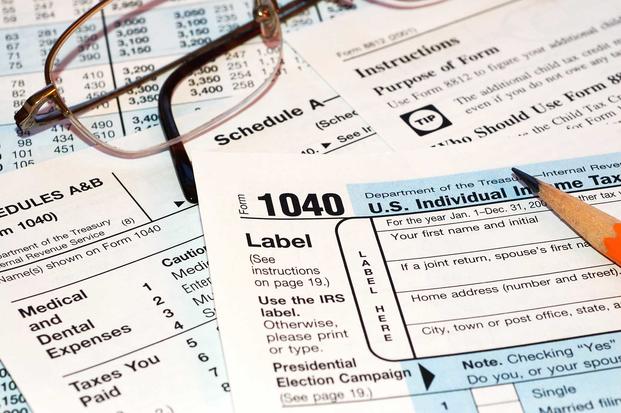Are you or your spouse running a small business or self-employed? If so, you probably need to make estimated tax payments to the Internal Revenue Service.
So what are these estimated tax payments? And do you need to make them?
Let's see.
Withholding and Income Taxes
To truly understand estimated taxes, you need to understand how our income tax withholding system works.
Basically, with every paycheck you get from an employer, the employer withholds a portion of your pay to go toward your eventual income tax bill. All those little bits add up and get applied to your tax bill when you prepare your tax return the following year. If you've withheld too much, you get a refund of the overpayment. If you don't withhold enough, you'll owe the remaining balance on your tax bill.
But if you are self-employed, you don't have taxes withheld from your paycheck. This would mean that you would owe your entire tax bill when you did your tax return after the end of the tax year (which is also the calendar year).
What Happens If You Withhold Too Little?
Some people would like to hold on to their money as long as possible, so they don't mind having a large tax bill. But others can find it hard to come up with thousands of dollars in one chunk.
But what you want doesn't really matter here. The IRS has rules about withholding, and they say that you need to try to withhold enough over the course of the year. If you don't, you can owe an underpayment penalty.
There is generally no penalty if you meet one of these criteria:
- You owe less than $1,000 in tax after subtracting your withholdings and credits
- You withheld at least 90% of the tax for the current year
- You withheld 100% of the tax shown on the return for the prior year
Making Estimated Tax Payments
Since self-employment income won't have taxes withheld from a paycheck, there is an alternate way to have those taxes withheld: estimated tax payments. Estimated tax payments are payments made directly to the IRS. There are four due dates for estimated tax payments, however, depending on holidays and weekends, they may differ from year to year. When the due date falls on a weekend or holiday, payment must be submitted on the first workday immediately after the due date:
- April 15, for income earned Jan. 1 to March 31
- June 15, for income earned April 1 to May 31
- Sept. 15, for income earned June 1 to Aug. 31
- Jan. 15 of the following year, for income earned Sept. 1 to Dec. 31
You can use the IRS Form 1040-ES to calculate how much you should pay for each estimated tax payment.
You can make the payment electronically via the IRS website.
The Other Withholding Option for Small Businesses and Individuals
Estimated tax payments are not the only way to ensure that your family withholds enough over the course of the tax year. If you or your spouse have taxes withheld from salaries, wages, pensions or certain government payments, you can increase the amount you have withheld from those payments.
For example, if you have a regular paycheck from an employer, and your spouse has a small business, you can increase your income tax withholding to cover the taxes that will be owed from your spouse's business. This can eliminate the need to make estimated tax payments, but it requires careful math to ensure that you are withholding enough. It usually works best if the business income is a small portion of the total household taxable income.
Estimated tax payments can help you avoid underpayment penalties. Take a few minutes to figure out whether you need to make an estimated tax payment for this tax period, and do it every tax period in the future. You don't want to pay a penalty.
Get the Latest Financial Tips
Whether you're trying to balance your budget, build up your credit, select a good life insurance program or are gearing up for a home purchase, Military.com has you covered. Subscribe to Military.com and get the latest military benefit updates and tips delivered straight to your inbox.











